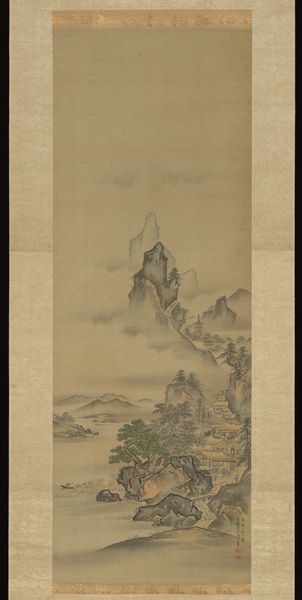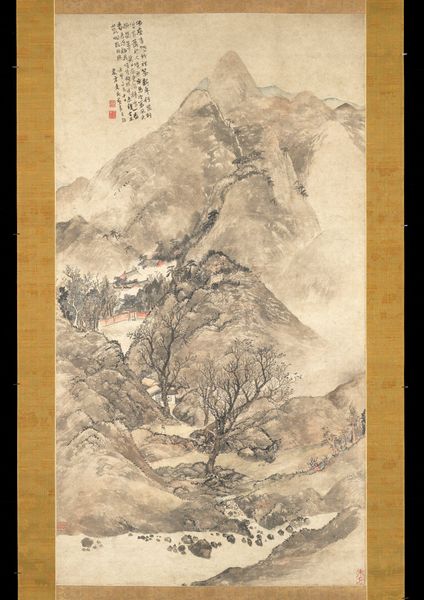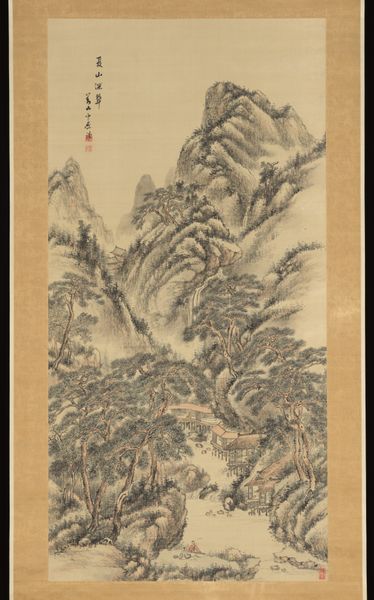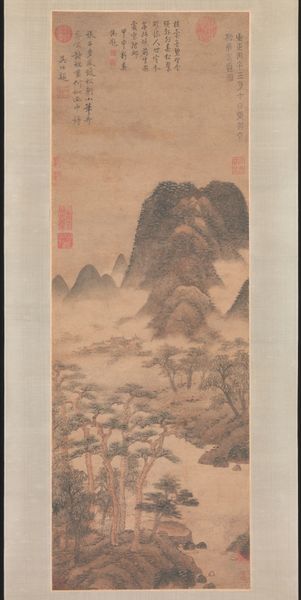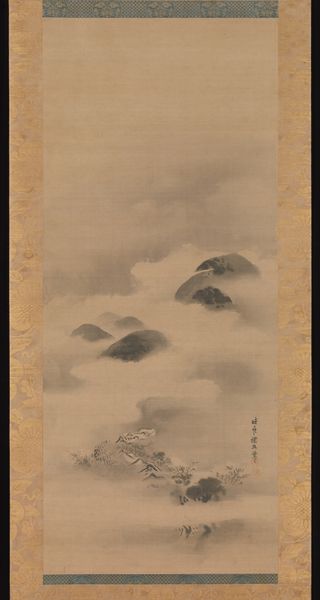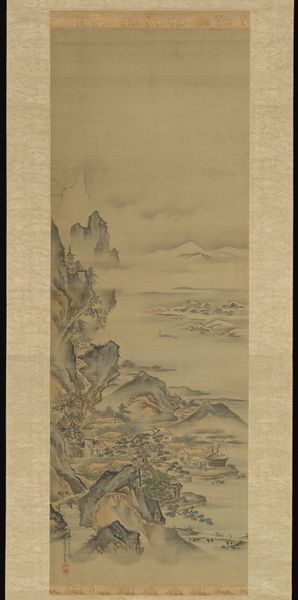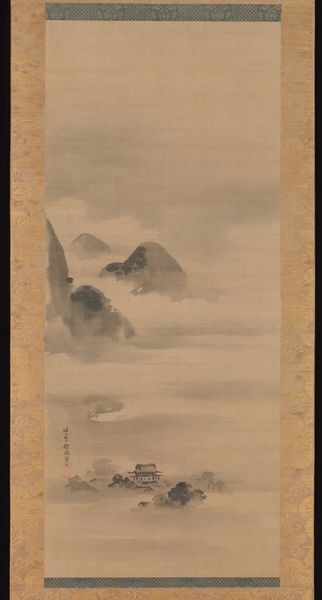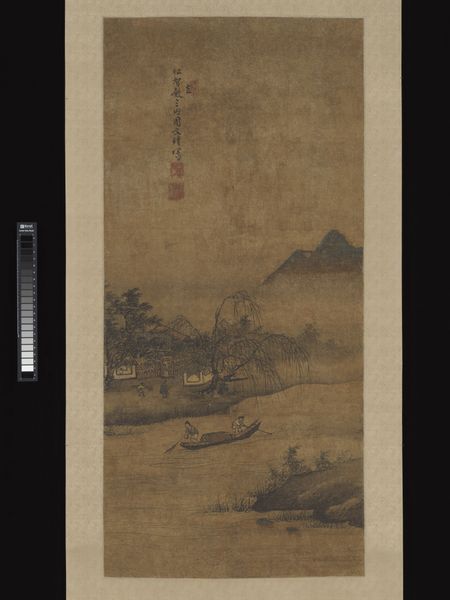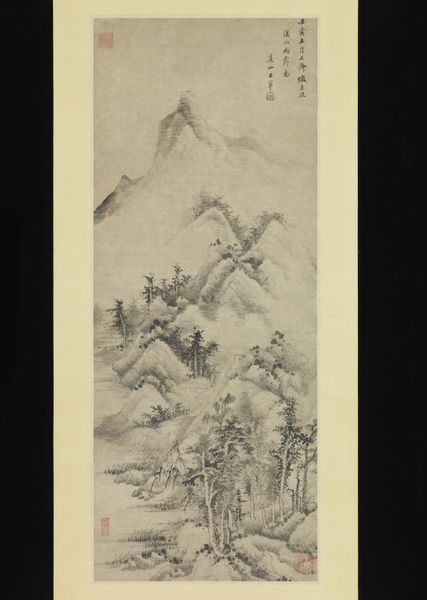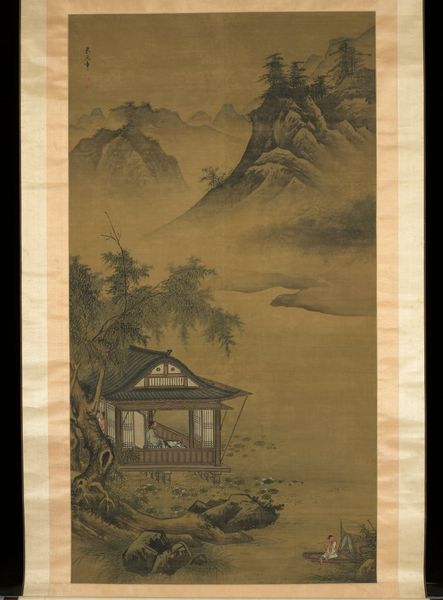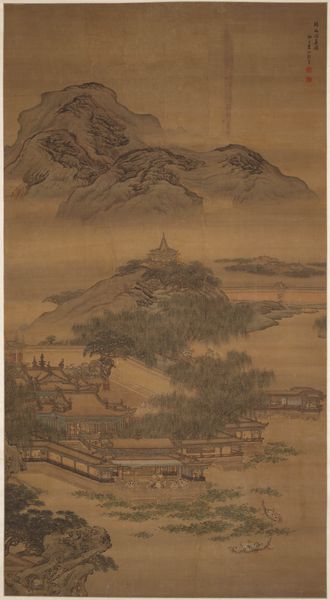
drawing, paper, ink
#
drawing
#
ink painting
#
asian-art
#
landscape
#
paper
#
ink
#
coloured pencil
#
watercolor
#
monochrome
Dimensions: 22 1/4 × 11 3/4 in.
Copyright: Public Domain
Editor: Here we have Gao Kekong's "Scholar in Landscape," created sometime after 1280, rendered in ink on paper. I’m immediately struck by its almost dreamlike quality, this misty monochrome scene. How do you interpret this work, and what are the key elements that define its significance? Curator: The painting’s misty landscape evokes more than just aesthetics. Consider the sociopolitical climate of the late Song dynasty. The literati were facing Mongol conquest, leading to displacement and a yearning for an idealized past. Do you notice how the scholar is situated within nature? Editor: Yes, he seems almost enveloped by it, in this small pavilion. Curator: Exactly! This isn't just a picturesque scene; it represents a retreat from the tumultuous political reality. Landscape painting during this period became a powerful medium for expressing resistance and cultural identity. The scholar becomes a symbol of cultural preservation. Notice the monochrome palette? Editor: Yes, it contributes to the subdued, contemplative mood. Curator: It’s a deliberate choice, signaling a rejection of courtly opulence in favor of a more austere, authentic representation of self and cultural values. Think of it as a quiet protest against the dominant power structure, embracing simplicity as a form of rebellion. How might the choice of landscape as subject matter reflect the values of the artist during a time of societal upheaval? Editor: I hadn't considered the landscape as a form of resistance before, that adds a whole layer of understanding! Curator: Art provides a vital lens to view and understand societal transformation. Editor: That’s so true, seeing how political and philosophical contexts shaped the artistic choices really changes my perspective on art history!
Comments
No comments
Be the first to comment and join the conversation on the ultimate creative platform.
